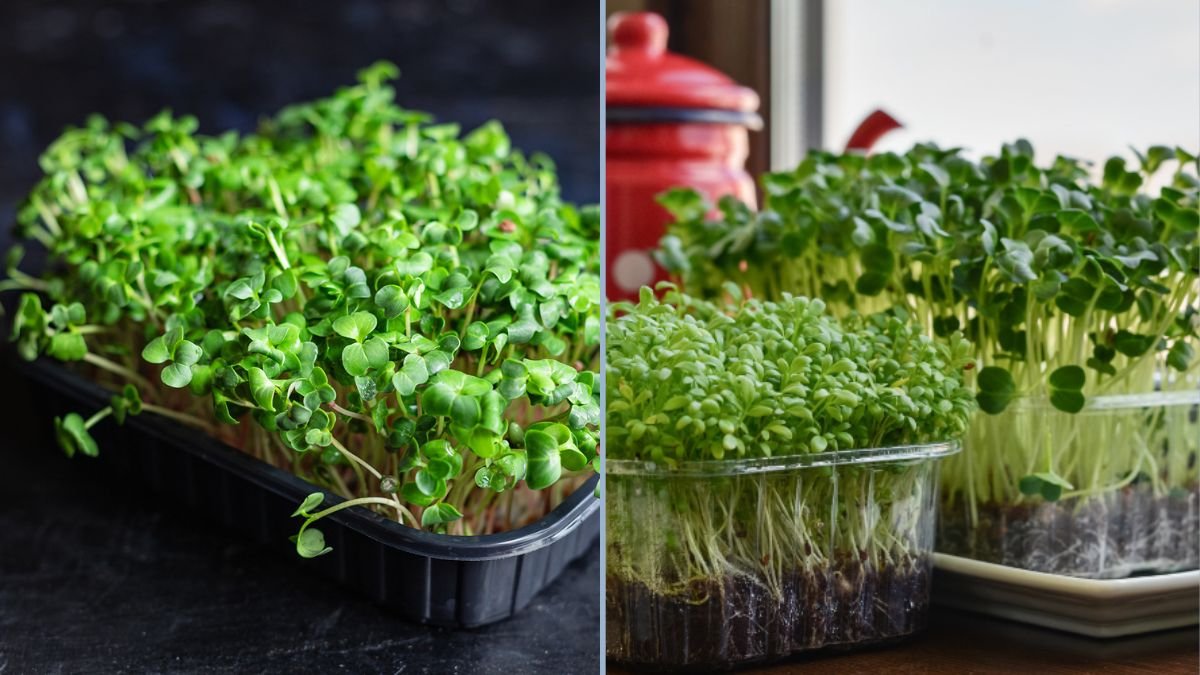Microgreens are young, tender seedlings of vegetables and herbs harvested shortly after germination, typically 1–3 weeks after sowing. Packed with vitamins, minerals, and antioxidants, microgreens offer exceptional nutritional value and culinary versatility. Their rapid growth cycle, small space requirements, and adaptability to indoor and controlled environments make them ideal for year-round cultivation.
Growing microgreens throughout all seasons requires understanding plant selection, light management, container preparation, nutrient provision, and pest-free organic practices. This article provides detailed guidance on cultivating seasonal microgreens in a sustainable and chemical-free manner, ensuring fresh, nutrient-rich greens throughout the year.
1. Advantages of Year-Round Microgreens
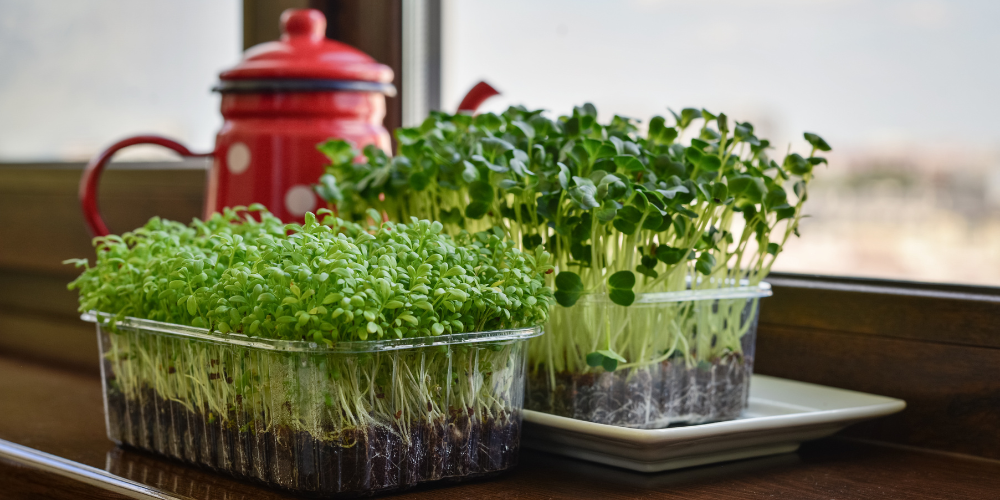
- Rapid Growth: Most microgreens are ready for harvest in 7–21 days.
- High Nutrient Density: Concentrated vitamins, minerals, and antioxidants surpass those in mature plants.
- Space Efficiency: Can be grown in trays, windowsills, or vertical setups.
- Sustainability: Requires minimal water, soil, and space compared to traditional crops.
- Culinary Flexibility: Enhances salads, sandwiches, smoothies, and garnishes.
The combination of speed, nutrition, and adaptability makes microgreens ideal for continuous indoor and outdoor gardening.
2. Seasonal Microgreens: Selection for Year-Round Growth
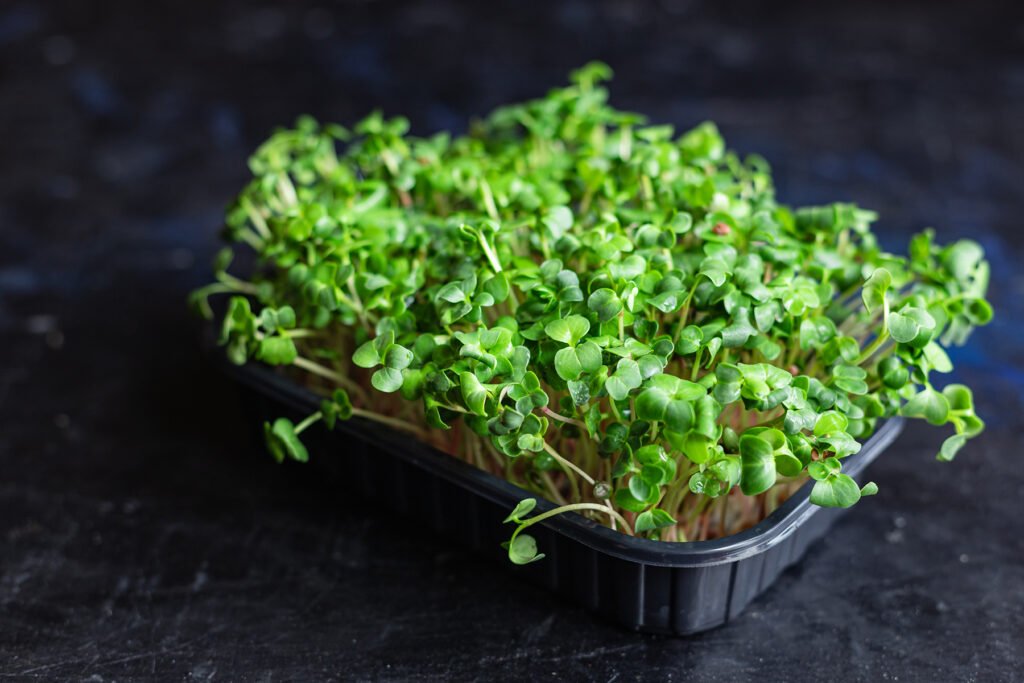
Microgreens can be categorized based on their growth tolerance to temperature and light conditions:
a. Spring Microgreens
- Pea Shoots: Sweet, crisp shoots rich in vitamins A, C, and folate.
- Radish Microgreens: Fast-growing with peppery flavor; ready in 7–10 days.
- Broccoli Microgreens: High in sulforaphane, a potent antioxidant.
b. Summer Microgreens
- Sunflower Shoots: Heat-tolerant, crunchy, and nutty-flavored.
- Basil Microgreens: Thrive under strong light and warm temperatures.
- Amaranth Microgreens: Adaptable to higher summer temperatures with vibrant red leaves.
c. Autumn Microgreens
- Mustard Microgreens: Peppery and robust; tolerate mild cooling temperatures.
- Cilantro Microgreens: Mild flavor, ideal for autumn harvests.
- Beet Microgreens: Colorful and nutrient-dense, thriving in moderate light.
d. Winter Microgreens
- Kale Microgreens: Hardy, tolerating cooler indoor temperatures.
- Chard Microgreens: Low-light tolerant, ideal for winter windowsills.
- Spinach Microgreens: Thrive indoors with supplemental lighting.
Selecting microgreens suitable for specific seasons ensures consistent growth, yield, and freshness year-round.
3. Container and Soil Preparation
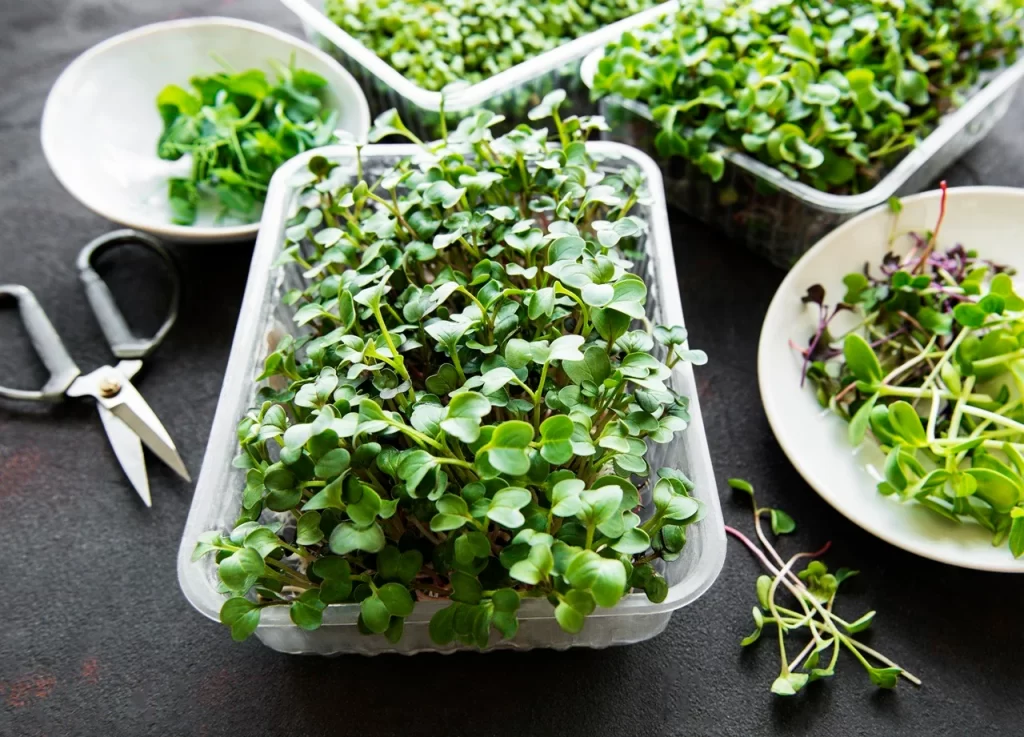
Microgreens require shallow containers and well-draining growing medium:
- Trays: Shallow trays (2–3 inches deep) with drainage holes are ideal.
- Soil Medium: Use a light mix of compost, coconut coir, and vermicompost for moisture retention and nutrient availability.
- Sterilization: Organic pasteurization of soil prevents seedling diseases.
- Seeding Density: Sow densely but evenly for compact, uniform microgreens.
Proper preparation ensures rapid germination and robust seedling growth.
4. Light Management
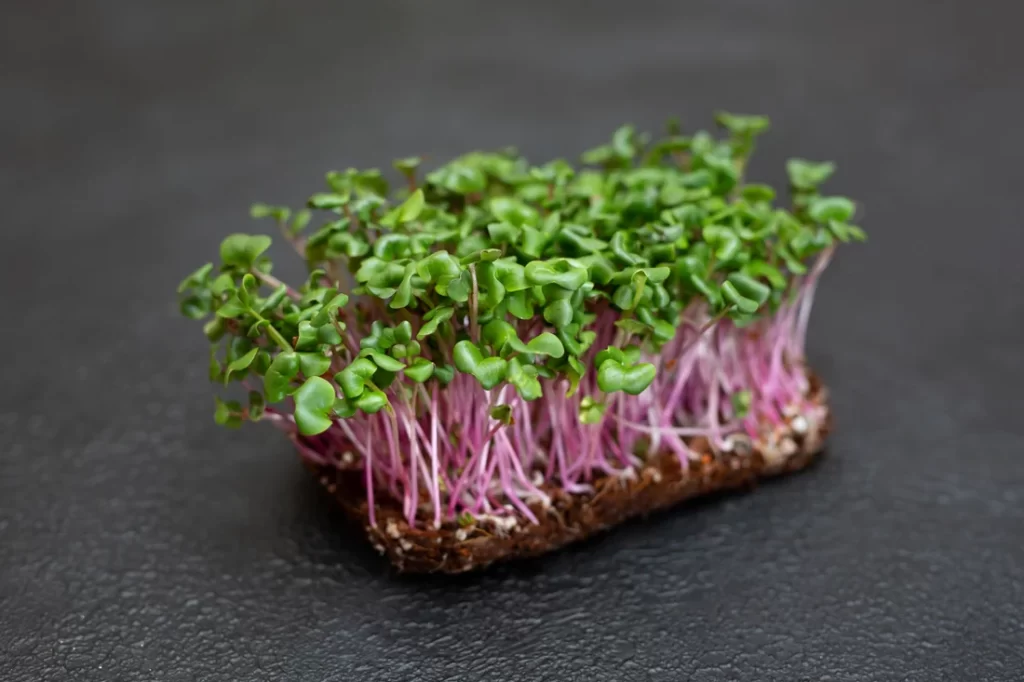
Light is crucial for healthy, vibrant microgreens:
- Natural Light: Place trays near south-facing windows for maximum exposure.
- Supplemental Lighting: LED grow lights provide consistent 12–16 hours of light per day, especially critical during winter and low-light periods.
- Light Distance: Position lights 6–12 inches above seedlings to prevent stretching and weak stems.
Adequate light promotes chlorophyll development, strong stems, and enhanced flavor.
5. Watering and Humidity Control
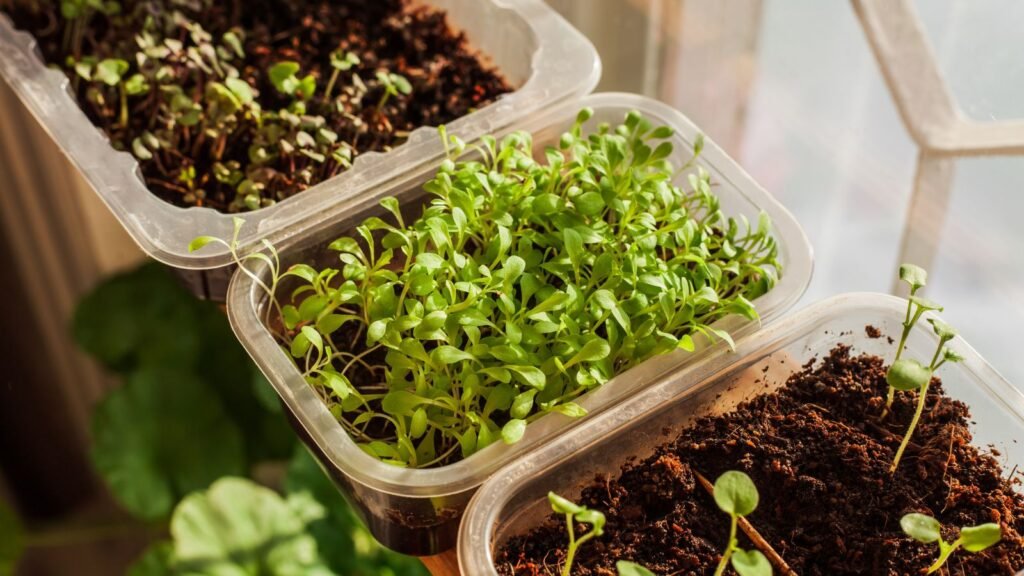
Microgreens are sensitive to both overwatering and drought:
- Misting: Light, frequent misting keeps seeds and seedlings moist without waterlogging.
- Bottom Watering: Tray irrigation minimizes fungal issues while ensuring roots absorb water.
- Humidity: Maintain moderate humidity (40–60%) to prevent damping-off diseases.
- Drainage: Ensure trays do not accumulate stagnant water, which can suffocate roots.
Proper moisture management supports rapid germination and healthy growth.
6. Temperature Requirements
Microgreens vary in temperature tolerance:
- Cool-Season Microgreens: Kale, broccoli, and spinach prefer 15°C–20°C (59°F–68°F).
- Warm-Season Microgreens: Basil, sunflower, and amaranth thrive at 20°C–25°C (68°F–77°F).
- Indoor Climate Control: Heating mats or room adjustments can optimize germination and growth during colder months.
Maintaining optimal temperatures ensures consistent growth and harvest quality.
7. Organic Nutrient Support
Microgreens grow quickly and benefit from minimal, natural fertilization:
- Compost Tea: Provides essential nutrients for rapid leaf development.
- Vermicompost Infusion: Enhances nitrogen availability for vibrant green leaves.
- Frequency: Apply lightly once or twice during the growth cycle; avoid over-fertilization, which can affect flavor.
Plant-based nutrient sources maintain health while preserving chemical-free cultivation.
8. Pest and Disease Management
Even indoor microgreens can face challenges:
- Common Issues: Fungal damping-off, aphids, or whitefly infestations.
- Prevention: Maintain proper air circulation, avoid overwatering, and use sterilized soil.
- Organic Remedies: Neem oil sprays, garlic-infused water, or mild soap solutions control pests safely.
- Sanitation: Clean trays and utensils after each harvest to prevent pathogen buildup.
Proactive management ensures disease-free, nutrient-rich microgreens year-round.
9. Succession Planting for Continuous Harvest
- Staggered Sowing: Plant new trays every 1–2 weeks for uninterrupted harvest.
- Cut-and-Come-Again: Some microgreens like pea shoots can be harvested partially, allowing regrowth.
- Rotation: Alternate varieties to maximize nutritional diversity and maintain soil health.
Succession planting ensures a steady supply of fresh microgreens for culinary or nutritional use.
10. Container Gardening and Space Optimization
- Vertical Shelving: Stack multiple trays to maximize indoor space.
- Windowsills: Utilize natural light for small-scale microgreens.
- Tiered Racks with LED Lighting: Efficiently grow multiple varieties indoors without crowding.
- Portable Trays: Allow movement to adjust light exposure or indoor temperature.
Optimized indoor setups support year-round growth, even in limited space.
11. Culinary and Nutritional Applications
Microgreens are versatile in diet and cuisine:
- Salads: Add flavor, color, and nutrition.
- Smoothies: Blend nutrient-dense greens like spinach or kale microgreens.
- Sandwiches and Wraps: Provide crunch and vitamins.
- Garnishes: Enhance presentation and micronutrient intake.
The culinary versatility of microgreens encourages year-round consumption of fresh, plant-based nutrition.
12. Benefits of Year-Round Microgreen Cultivation
- High Nutrient Value: Concentrated vitamins and antioxidants support health.
- Quick Harvest: Rapid cycles allow frequent consumption and minimal storage.
- Sustainability: Low water, soil, and space requirements reduce environmental footprint.
- Mental Well-Being: Indoor cultivation promotes mindfulness and reduces stress.
- Food Security: Provides fresh, reliable greens even during off-seasons.
Year-round microgreens cultivation combines nutrition, convenience, and sustainability.
13. Troubleshooting Common Issues
- Leggy Seedlings: Result of insufficient light; adjust lighting or reposition trays.
- Yellowing Leaves: May indicate nutrient deficiency or water imbalance; monitor soil and nutrient application.
- Fungal Growth: Avoid overwatering, ensure proper spacing, and improve airflow.
- Slow Germination: Ensure seed viability, temperature, and consistent moisture.
Early detection and intervention maintain healthy microgreens and uninterrupted growth cycles.
14. Conclusion
Microgreens are an exceptional solution for year-round access to fresh, nutrient-rich produce. By selecting seasonal varieties, optimizing light, temperature, and humidity, and employing organic nutrient and pest management strategies, gardeners can cultivate microgreens continuously in indoor and controlled environments.
Succession planting, container optimization, and vertical gardening maximize space efficiency and ensure a steady harvest. Microgreens offer culinary flexibility, high nutritional value, and sustainable growth, making them ideal for indoor winter or off-season gardening.
Through careful planning and attention to seasonal needs, year-round microgreen cultivation transforms limited space into a productive, chemical-free source of fresh vegetables and herbs, supporting nutrition, health, and sustainable living.
